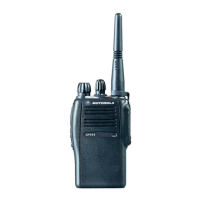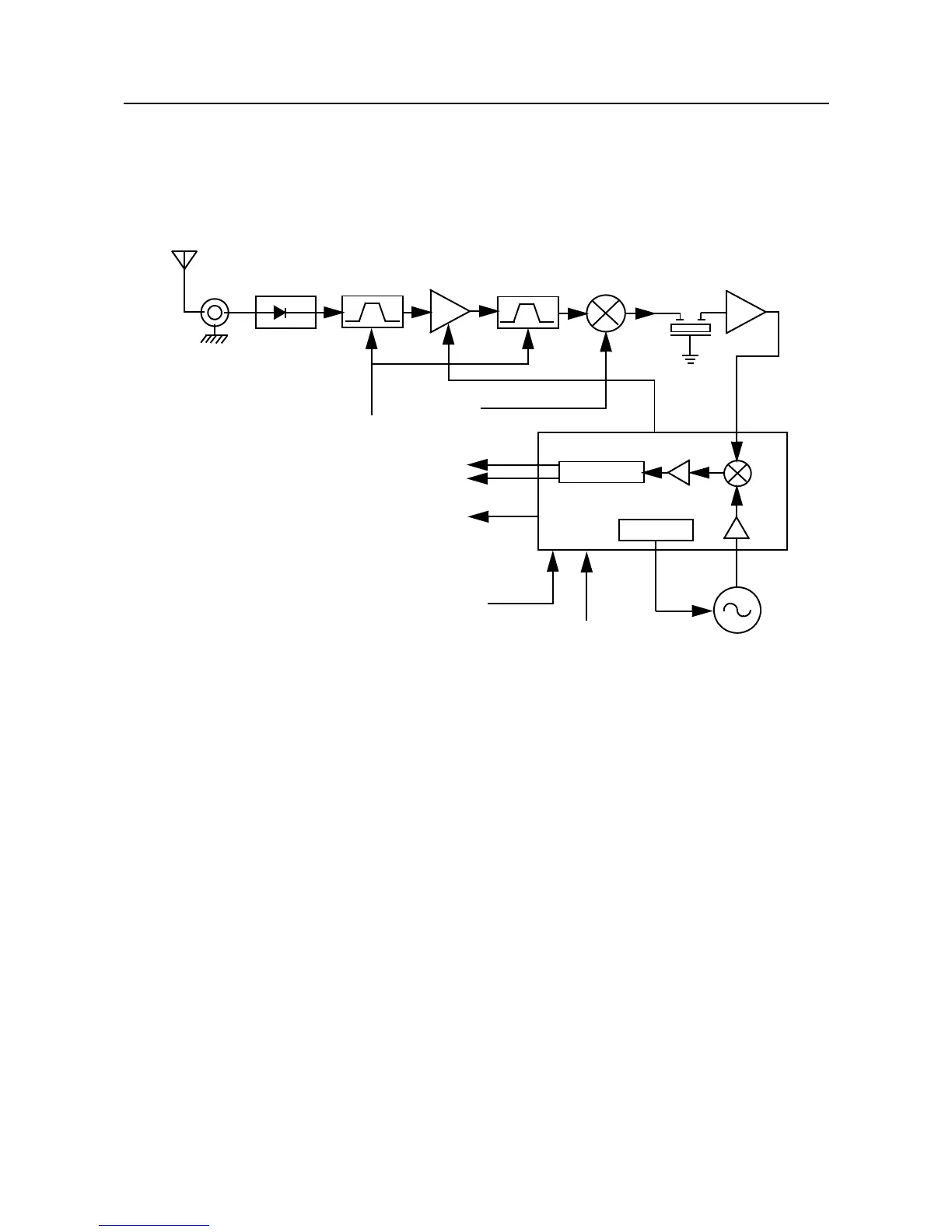Receiver 1-3
3.0 Receiver
The UHF receiver consists of a front end, back end and automatic gain control circuits. A block
diagram of the UHF receiver is shown in Figure 2-2 .
3.1 Receiver Front-End
The RF signal is received by the antenna and applied to a low-pass filter. For UHF, the filter consists
of L101, L102, C102, C103, C104. The filtered RF signal is passed through the antenna switch. The
antenna switch circuit consists of two PIN diodes(CR101 and CR102) and a pi network (C106, L104
and C107).The signal is then applied to a varactor tuned bandpass filter. The UHF bandpass filter
comprises of L301, L302, C302, C303, C304, CR301 and CR302. The bandpass filter is tuned by
applying a control voltage to the varactor diodes(CR301 and CR302) in the filter.
The bandpass filter is electronically tuned by the DACRx from IC404 which is controlled by the
microprocessor. Depending on the carrier frequency, the DACRx will supply the tuned voltage to the
varactor diodes in the filter. Wideband operation of the filter is achieved by shifting the bandpass
filter across the band.
The output of the bandpass filter is coupled to the RF amplifier transistor Q301 via C307. After being
amplified by the RF amplifier, the RF signal is further filtered by a second varactor tuned bandpass
filter, consisting of L306, L307, C313, C317, CR304 and CR305.
Figure 1-2 UHF Receiver Block Diagram
Demodulator
Synthesizer
Crystal
Filter
Mixer
Varactor
Tuned Filter
RF Amp
Varactor
Tuned Filter
Pin Diode
Antenna
Switch
RF Jack
Antenna
AGC
Control Voltage
from ASFIC
First LO
from FGU
Recovered Audio
Squelch
RSSI
IF
IC
SPI Bus
16.8 MHz
Reference Clock
Second
LO VCO
IF Amp
U301

